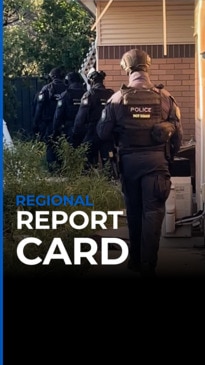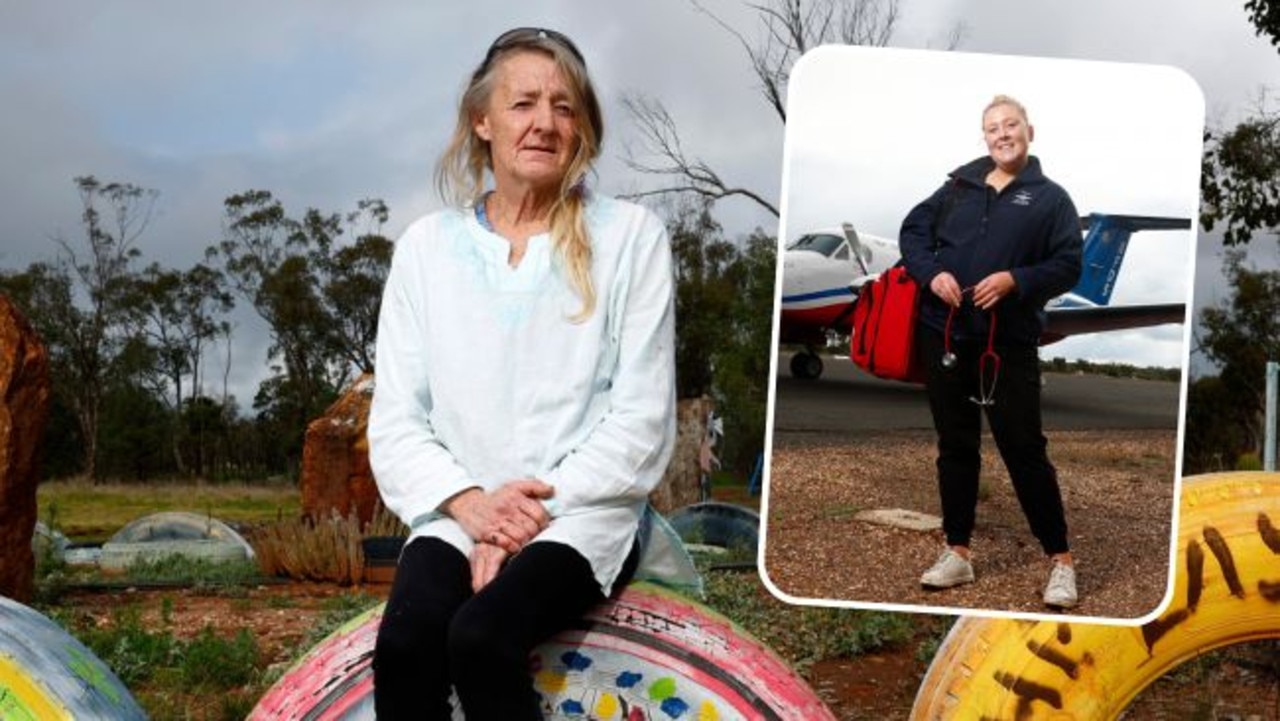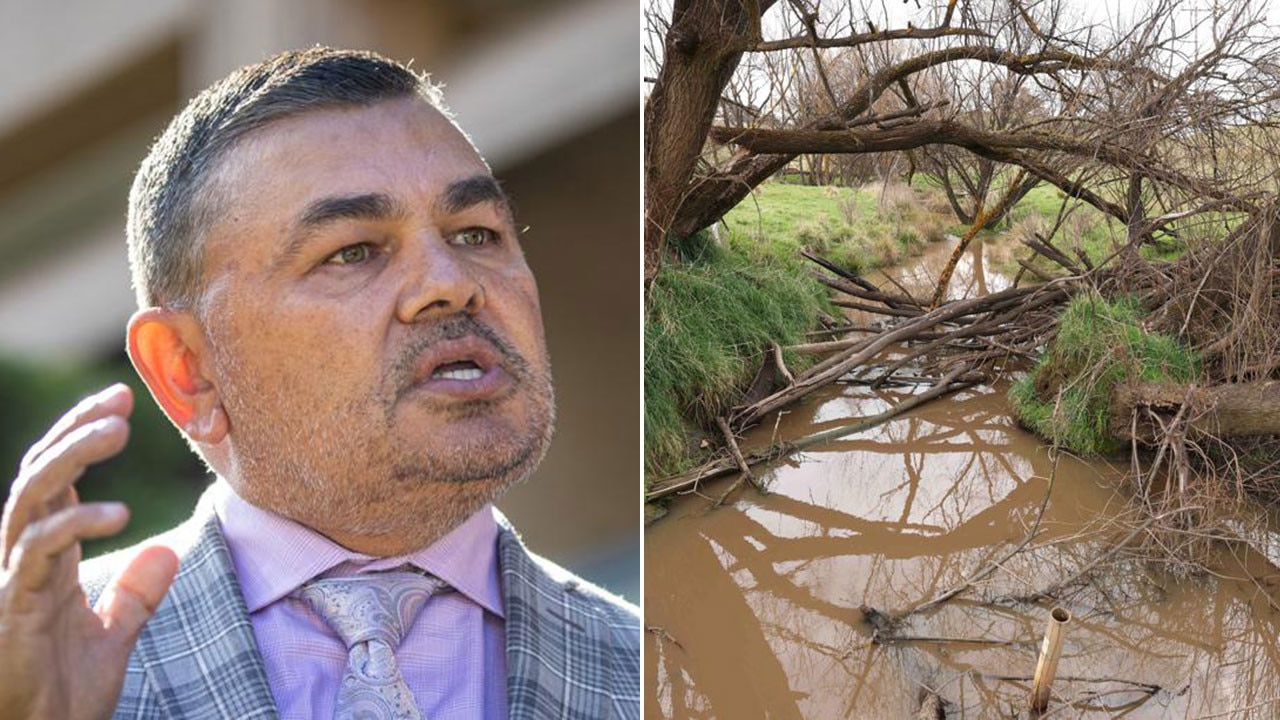Bush Summit: Reality of health, housing, economy, crime in the bush
True Aussie battlers, regional and country NSW punch above their weight when it comes to hurdles like the economy, crime, health and education. Ahead of the Bush Summit, we assess the state of the regions.

Bush Summit
Don't miss out on the headlines from Bush Summit. Followed categories will be added to My News.
It’s an economic powerhouse which punches above its weight, but shortages of professionals – especially across health and education – remain a major challenge to the NSW regions, as does a crime wave.
Ahead of Thursday’s Daily Telegraph Bush Summit, we run our eye over the state of the bush.
HOUSING: AMBER
The bush isn’t immune from the housing crisis most loudly heard about in Sydney.
Under new housing targets set by the Commonwealth Government, regional NSW has been allocated a goal of 55,000 new homes of the 377,000 required to be built in the state by 2029.
The new supply can’t come quick enough – with analysis from NAB earlier this year stating rental vacancies in regional NSW sat at just 1.2 per cent, while rent costs crept up by 3.9 per cent over the year prior.
The median price for a house in regional NSW now sits at $757,597 – almost half of the $1,473,038 a house in Sydney will cost you.
“The cost of materials is greater where you don’t have economies of scale and supply chains set up – when you’re building a new house in Parkes, it’s cheaper in terms of land price – but materials, labour, and transport logistics, add up,” Urban Taskforce CEO Tom Forrest said of the challenge of building in the bush.
“The rental supply is less in regional locations than greater Sydney … a healthy market has a vacancy of five per cent.”
“That is worst felt in regional NSW.”

HEALTH: RED
A scathing report by a NSW Government committee this month found remote, rural and regional health in the state was beset by problems, including poorer health outcomes among bush residents, critical worker shortages and hospitals struggling to cope.
With resources now pouring into the regions to address these issues, the report credited the Rural Health Workforce Incentive Scheme with retaining more than 9,000 health workers since it was introduced in 2022.
NSW Health Minister Ryan Park said staff shortages were the “single greatest challenge” in the bush health system.
“The NSW Government is undertaking the largest structural reforms to our workforce in its history,” he said.
More than $200 million has been spent on delivering more health worker accommodation and $1 billion on regional health infrastructure, while 500 paramedics have been deployed to rural ambulance stations and new virtual care services had been developed to give people in the bush access to expert care.
Royal Australian College of GPs President Dr Nicole Higgins said boosting the rural general practice workforce “must be a priority” for the federal government.
“Everyone deserves access to high-quality general practice care, regardless of their postcode,” she said.
Dr Higgins said the Commonwealth should ramp up funding incentives and subsidised training for registrars.
“The latest departmental figures predict a shortage of 5560 GPs by 2033, and up to 8908 in 2048,” she said.
“This will disproportionately impact rural and remote areas.”
ECONOMY: GREEN
Regional NSW’s diverse economy has helped it deliver for the bush, with tourism, mining and agriculture key pillars.
Earlier this year, a Mining NSW survey found the industry supported more than 31,500 full-time equivalent jobs – the majority in the bush.
Despite the challenge of turbulent weather forecasts, NSW’s farm gate value of production still hit $25 billion in the last year – underpinning the importance of agriculture for the state.
“We take it for granted, but for a start you need to be fed and clothed,” NSW Farmers president Xavier Martin said.
In the year to March 2024, spending on regional tourism also climbed to $25.3 billion – a 1.3 per cent rise on the year before.
NSW Minerals Council chief Stephen Galilee said mining projects in NSW contributed about 20 per cent of the economic activity of the Central West region, and nearly 30 per cent of the Hunter Region.
Mr Galilee said that was why new projects, like the McPhillamys gold mine which was scuppered by a ban on a tailings dam from Environment Minister Tanya Plibersek, were crucial to “sustain regional communities”.

EDUCATION: AMBER
Regional NSW outstrips the metropolitan areas when it comes to teacher shortages, with 942 vacancies in regional and rural NSW compared to 734 in the city.
The latest statistic, however, is a sharp drop from the 1235 vacancies recorded in the bush in 2023, which is also down on the 1441 in 2022.
Federal Education Minister Jason Clare will use his address at the Bush Summit on Thursday to acknowledge the need for more teachers in the bush and announce 30 per cent of Commonwealth Teaching Scholarships awarded this year went to recipients from the bush.
“(The scholarships) are worth up to $40,000 each, and they come with a requirement that you have to commit to working in a public school for up to four years,” he will say.
The government has also agreed to repay the HECS debt of any teacher who works in a “very remote school” for four years.
There is also a divide in university attendance rates in the bush, with only about 20 per cent of people from Orange holding a degree compared to 60 per cent in an inner-city Sydney suburb like Vaucluse.
CRIME: RED
Crime in regional NSW has dominated headlines in recent months, with the issue forcing a NSW Government inquiry earlier this year, alongside a $26.2 million commitment to a program targeting youth crime in the state.
Police launched Operation Mongoose last September to tackle soaring rates of home invasions, car thefts and robberies in bush towns.
As of this week, there have been 940 people arrested and charged - including 294 kids mostly aged between 14 and 17 - with a total of 1407 court appearance notices issued consisting of 3403 offences.
In a bid to address staff levels, a new incentive scheme has resulted in 114 police officers being transferred to regional stations.
But NSW shadow police minister Paul Toole said the state government was “sitting on its hands” regarding after-hours youth intervention, diversion program and reforms to the justice system to step up penalties for repeat offenders.
“Crime is out of control in regional NSW, and people are living in fear,” he said.
Police Association of NSW president Kevin Morton said to address burnout, a regional crime inquiry must address the “non-core work” country cops are undertaking and investigate 24-hour staffing of police stations.
“(These criminals) know full well the times and dates police stations aren’t going to be open, and the opportunities that exist when those police stations aren’t manned,” he said.
Police Minister Yasmin Catley acknowledged the “real issues” around regional crime and said she was focused on recruiting “more boots on the ground” after “hundreds of experienced officers left the force” on the previous government’s watch.
“We want to get to the bottom of these complex problems and tackle the root causes of offending,“ she said.
“This requires everyone from state to local government, community organisations, support services and education to work together.”
More Coverage
Originally published as Bush Summit: Reality of health, housing, economy, crime in the bush




